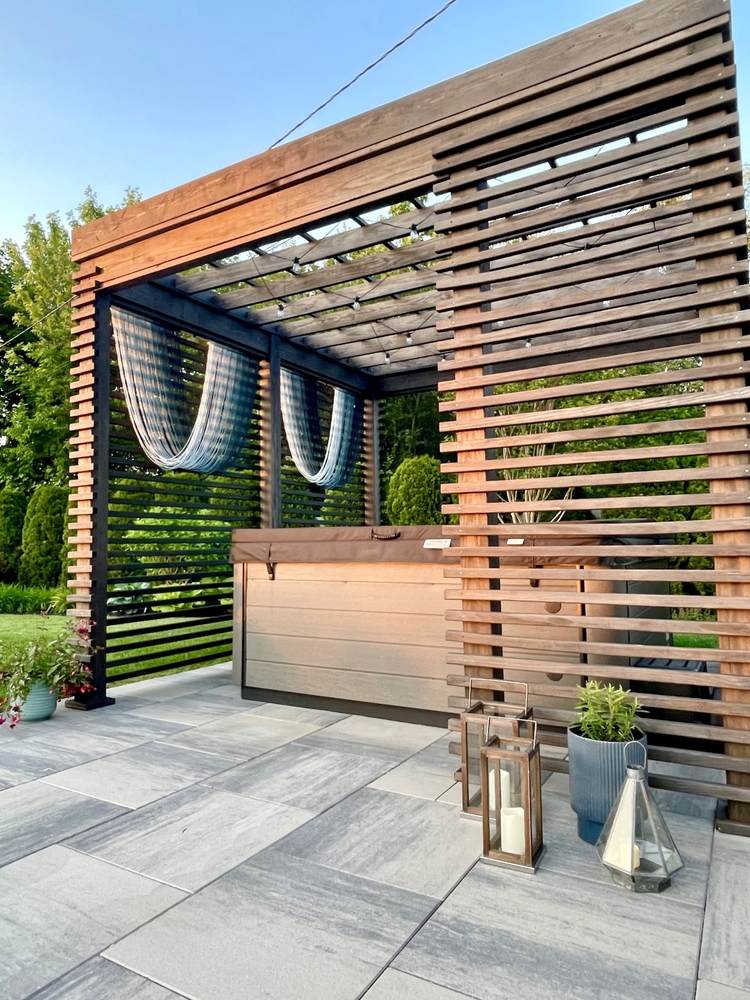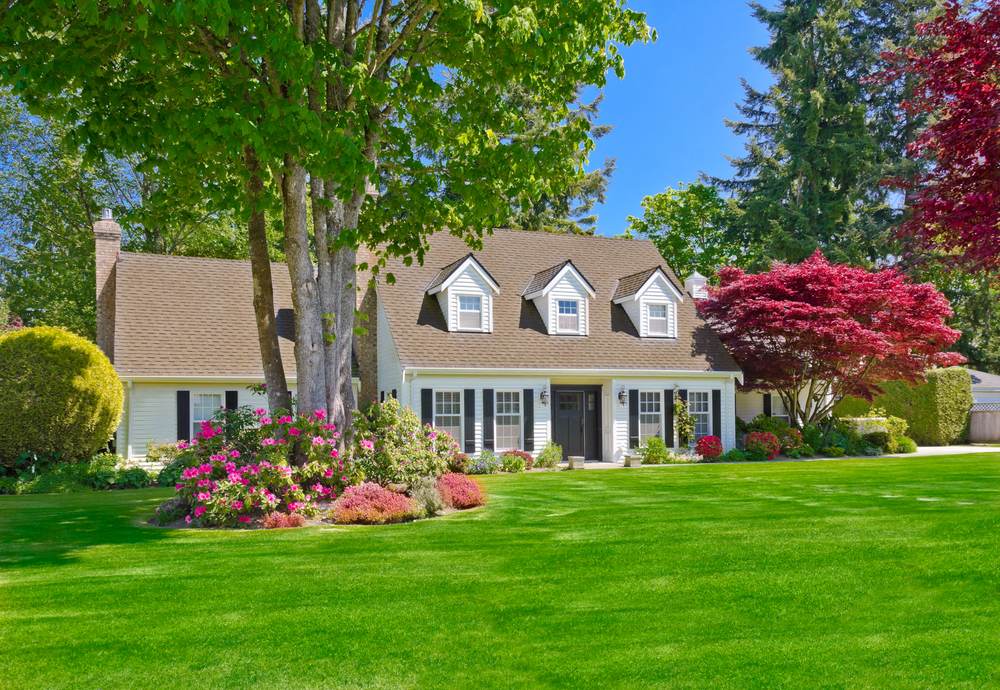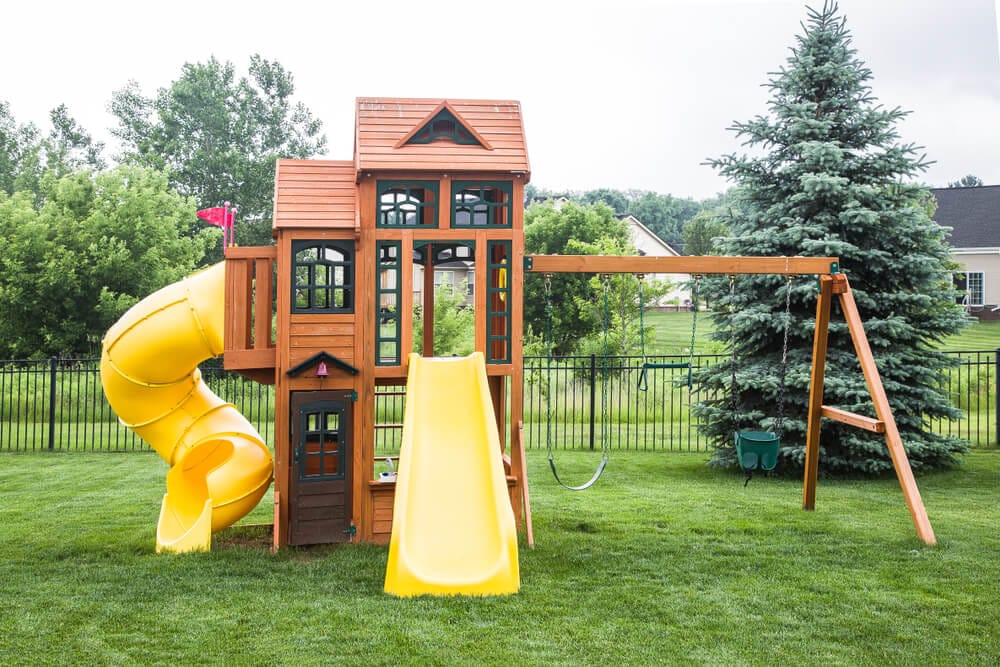Ultimate Guide to Beautiful Landscape Design
Thinking of redesigning your outdoor spaces? Here is what you need to know about landscaping basics to make your garden shine.

Having a beautiful and functional outdoor space can be a life changer. Great landscaping can transform your garden into a relaxing oasis where you can entertain in style. Landscaping offers endless possibilities, whether you're looking to increase your property's curb appeal, create a restful retreat, or enhance your outdoor living space.
Landscaping is the art and science of transforming outdoor spaces into beautiful, functional environments. In this post, we review the various landscaping ideas to help you create a space you'll love spending time in.
Landscape design 101
While the visual appeal of your outdoor design is important, it's equally crucial to ensure it serves its purpose. Features like seating, walkways, and drainage serve functional roles and enhance your landscape's beauty.

By exploring the world of landscaping, you can unleash your creativity and gain a deeper understanding of the key components, from architecture to construction to gardening. It involves careful planning and consideration, from selecting the right plants for your climate to designing practical and aesthetically pleasing layouts.
Landscaping can be an expensive project or something you can tackle as a DIY undertaking. Knowing what you want to achieve and why is essential no matter what route you choose.
Amazing landscape design ideas
A great landscape design enhances the visual appeal of your home or property and adds a personal touch that reflects your unique style.

Landscaping can significantly increase the value of your property and create a welcoming environment that complements your personality. To achieve this, several key elements must be considered.
Enhance your entrance
First impressions matter, and your landscaping can help create a grand entrance to your home. Use flowers, vibrant colours, features, or ornaments to catch the eye and draw attention.

The entrance should guide the viewer's eye along a path toward your highlight, whether it's the house, the property, or a focal point.
Create captivating focal points
When creating a focal point, ensure it's striking and guides the viewer's attention. Focal points indicate the design's theme or style and evoke emotion, interest and awe.

You can use statues, fountains, or even a beautiful tree to create an attractive focal point that can also serve as a conversation starter.
Choose the right plants
Selecting the right plants is crucial for any landscaping project. Always use varieties native to the climate and soil so that they can adapt to local weather conditions. Consider the longevity of the plants and avoid planting trees that could grow too large and become hazardous.

Add contrasting colors
Contrasting colors can enhance your landscape's visual appeal. Mix and match colors to complement each other instead of using large blocks of a single color, creating a more exciting and dynamic landscape.
Incorporate movement
Incorporate elements that add movement to your landscape, such as wind chimes, kinetic art, or plants that sway in the breeze. Movement makes the landscape more engaging and can attract birds or butterflies.

Hide unsightly elements
Use landscape design to conceal unsightly elements like piping or outdoor wiring in your garden. Shrubs and flowers can hide industrial covers and blend them into the overall aesthetic. This way, you can create a more visually appealing space without a major overhaul.
Maintain a natural flow
Ensure your landscape has a natural flow. Avoid overcrowding or underdressing the space. Plantings, pathways, and features should work together to direct the flow toward the main highlight, typically the house or a focal point.

Plan seasonally
When planting, consider the seasonal changes. Choose trees and plants that will maintain interest throughout the year. Autumnal plants can add color in colder months, extending your garden's visual appeal. At the same time, evergreens provide structure and maintain a spot of color throughout the year.
Focus on conservation
Combine functionality with beauty. Trees and plants act as natural air purifiers and offer many health benefits. They can also help shield areas of your home and garden from wind and rain in the colder months and provide helpful shade in the warmer months, contributing to energy savings.

Ensure safety
Safety is essential in landscape design. Ensure pathways are smooth and free from tripping hazards. Secure stones, bricks, or pebbles, and avoid overhanging plants that could cause tripping.
Landscaping ideas for your backyard
Transform your backyard into a serene oasis with diverse elements like planters, vegetable gardens and water features. Consider soil composition, sunlight exposure, and plant hardiness zones when planning your backyard landscape design.

Create planters and flower beds
Elevate your backyard's aesthetic appeal by incorporating vibrant planters and flower beds. Choose a mix of perennials and annuals to ensure year-round color. Consider raised beds for better drainage and easier maintenance. Use a variety of textures and heights to create visual interest, and don't forget to include native plants to support local ecosystems.

Grow your own vegetables
Combine beauty and functionality by integrating a vegetable garden into your landscape design. Create dedicated beds for different crops, or try vertical gardening for space-saving solutions. Incorporate companion planting techniques to deter pests and improve soil health naturally. Add a structure with trellises and arbors for climbing vegetables like peas and beans.

Add unique features
Enhance your backyard's ambiance with eye-catching water features. A tranquil fountain can be a focal point, while a naturalistic pond can attract wildlife.

Consider incorporating rocks, aquatic plants, and mood lighting to create a stunning water feature. Ensure proper filtration and maintenance to keep your water elements clean and inviting.
Combine your garden with a patio
Seamlessly blend your garden and patio areas for a cohesive outdoor living space. Use container gardens and hanging baskets to soften hardscaping elements.

Incorporate built-in planters around seating areas for a lush, intimate feel. Choose patio materials that complement your garden's style, such as natural stone or permeable pavers for eco-friendly drainage.
Grassless landscaping ideas
If you are looking for a more modern and sleek backyard—perhaps for parties, entertaining, or even just aesthetics—opt for a grassless backyard.

Here are some popular grassless garden ideas for your backyard that offer practical and aesthetically pleasing alternatives for those seeking low-maintenance, versatile outdoor spaces.
Create a patio paradise
Install a patio instead of grass to transform your backyard into the perfect entertainment destination. Pave the area or use decorative flagstone for the patio.

Add comfortable furniture to create an inviting space for relaxation or entertaining friends. Consider adding a fire pit for those colder nights, enhancing both the aesthetic and functionality of your outdoor paradise.
Design a rock garden
Replace grass with gravel, rocks, or pebbles to craft a serene zen garden. This low-maintenance option is both beautiful and clean. It's an ideal solution if you prefer minimal upkeep and still want to enjoy a visually appealing landscape.

Get creative with cement
Pave or cement over your landscape to create a smooth, versatile area for various uses. Decorate the space with garden furniture, barbecues, or even a hot tub. Enhance the area with small potted plants or shrubs to add a touch of greenery, compensating for the lack of natural grass.

Corner garden landscaping Ideas
Embrace the unique character of your odd-shaped garden with creative landscaping solutions. Clever design techniques can transform challenging spaces into captivating outdoor retreats. Focus on maximizing usable space while creating visual interest through varied elevations, curved lines, and strategic plant placement.

Construct a pond
Incorporate a pond to add depth and intrigue to an irregularly shaped garden. Use the pond's organic shape to soften angular corners or awkward spaces. Add aquatic plants, stepping stones, and a small waterfall to create a multi-sensory experience.

Consider the pond's placement carefully to ensure it complements the overall garden layout and doesn't overshadow other features.
Incorporate tiered beds
Utilize tiered beds to add dimension and maximize planting space in odd-shaped gardens. Create a series of stepped planters following the natural contours of your landscape.

Construct sturdy, attractive tiers using retaining walls or gabion baskets. Plant different species at each level to create a cascading effect of colors and textures.
Go for a custom deck
Install a custom-designed deck to make the most of an unusual garden shape. Use angles and curves that complement your garden's layout, creating distinct zones for relaxation and entertainment.

Incorporate built-in seating and planters to maximize space efficiency. Choose decking materials that blend seamlessly with your existing landscaping and architectural style.
Driveway landscaping ideas
Transform your driveway from a purely functional space into an attractive, welcoming entrance to your home. Thoughtful landscaping can soften hard surfaces, improve curb appeal, and increase property value.
When planning your driveway landscape design, consider factors such as drainage, maintenance requirements, and local regulations.
Beautify your borders
Line your driveway with low-growing plants and ornamental grasses to create a stunning first impression. Use a combination of evergreens for year-round structure and flowering perennials for seasonal color.

Install landscape edging to keep plants contained and create a clean, defined border between the driveway and planted areas.
Permeable paver paradise
Upgrade your driveway with eco-friendly permeable pavers interspersed with hardy ground covers or decorative gravel. This approach adds visual interest, improves drainage, and reduces runoff.

Choose pavers in colors and patterns that complement your home's exterior, and consider incorporating inlaid designs for added flair.
Grand entrance arbor
Make a statement with an arbor or pergola over your driveway entrance. Train climbing vines like wisteria or clematis to create a living canopy.

Flank the structure with matching ornamental trees or large planters for a symmetrical, formal look. Add landscape lighting to highlight this feature and improve nighttime visibility.
Front yard landscaping ideas
Create a captivating first impression with thoughtful front yard landscaping. A well-designed front yard enhances curb appeal and sets the tone for your entire property. Balance aesthetics with functionality, considering privacy, maintenance requirements, and local climate conditions in your landscape design.

Water features
Incorporate a water feature to add a touch of tranquility to your front yard. Options range from simple bubbling rocks to elaborate tiered fountains. Choose a style that complements your home's architecture and overall landscape design.

Position the water feature where it can be enjoyed from inside and outside the house, and consider adding subtle lighting for nighttime ambiance.
Plants and lighting
Combine strategic plant choices with creative lighting solutions to create a dynamic front yard landscape. For year-round interest, use a mix of evergreens, deciduous trees, and flowering shrubs.

Install path lights, uplights, and accent lights to highlight key features and ensure safe navigation after dark. Consider smart lighting systems for energy efficiency and programmable options.
Welcoming walkways
Design an inviting entrance with a well-crafted walkway. Use materials that complement your home's exterior, such as brick, natural stone, or stamped concrete. Soften the edges with low-growing plants like creeping thyme or moss.

Create visual interest by varying the width or adding gentle curves to the path. Consider incorporating stepping stones or inlaid designs for added character.
Patio landscaping ideas
Transform your patio into an outdoor oasis with creative landscaping techniques. A well-designed patio can serve as an extension of your indoor living space, providing a perfect area for relaxation and entertainment. When planning your patio landscape, consider factors such as privacy, shade, and integrating natural elements.
Living wall wonder
Create a stunning vertical garden to maximize space and add a lush backdrop to your patio. Install a modular living wall system and fill it with a variety of plants, from succulents to ferns.

This adds visual interest and helps purify the air and reduce ambient temperature. Include a built-in irrigation system for easy maintenance.
Edible landscape border
Surround your patio with a beautiful and functional edible landscape. Plant a mix of ornamental and edible plants, such as dwarf fruit trees, herb spirals, and colorful Swiss chard.

Use attractive containers and raised beds to add height and definition. This approach looks great and provides fresh ingredients just steps away from your outdoor dining area.
Zen retreat
Transform your patio into a serene, zen-inspired retreat. Incorporate elements like a small rock garden, a bamboo water feature, and strategically placed bonsai trees.

Use minimalist furniture and neutral colors to create a calm atmosphere. Add outdoor shoji screens or lattice panels for privacy and to create distinct areas within your patio space.
Kid-friendly landscaping ideas
With these kid-friendly landscaping ideas, you can design a beautiful and fun backyard for children. Outdoor spaces that encourage play and exploration can foster a love of nature in young ones. Balance safety considerations with aesthetic appeal to create a landscape for the whole family.
Natural playground
Incorporate natural play elements into your landscape design. Create a balance beam from a fallen log, install a climbing wall using natural rocks, or build a treehouse that blends with surrounding foliage.

Use wood chips or rubber mulch for safe ground cover in play areas. Plant sensory gardens with touchable textures and fragrant herbs to engage children's senses.
Magical secret garden
Design a whimsical secret garden to spark children's imagination. Create winding paths lined with colorful flowers and fairy houses. Include a child-sized arbor covered in climbing plants to serve as a secret entrance. Add fun elements like a bubble station, a sundial, or a weather rock to encourage outdoor learning and play.
Swings and recreation zone
Designate an area of your yard for active play and sports. Install a multi-use court with adjustable equipment for various games. Get a swing and slides for low-maintenance fun.

Include a flat, grassy area for informal games and picnics. Use landscaping elements like hedges or decorative fencing to separate this area from quieter garden spaces.
Conclusion
Landscaping is a creative process that will challenge you in numerous ways. It requires hard work and time to complete, but the transformation it brings to your outdoor space is truly exciting. Even by hiring a professional, you will make important decisions, and the end result will be worth the effort.
Landscape design is not just about enhancing your property, it's a great opportunity to show who you are. With these design ideas, we hope you'll be inspired to infuse your outdoor spaces with your personal style and create a landscape that truly reflects you.
